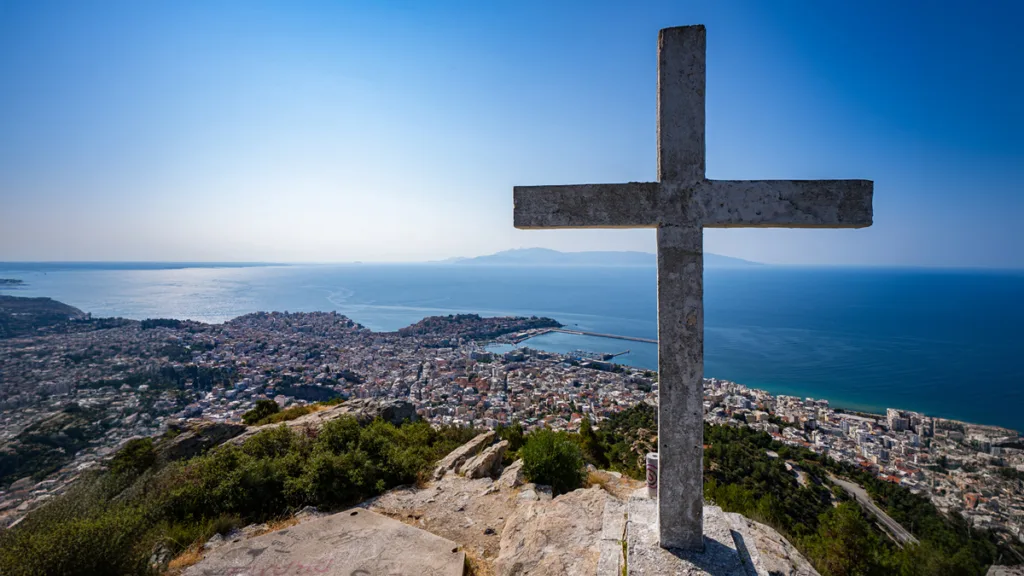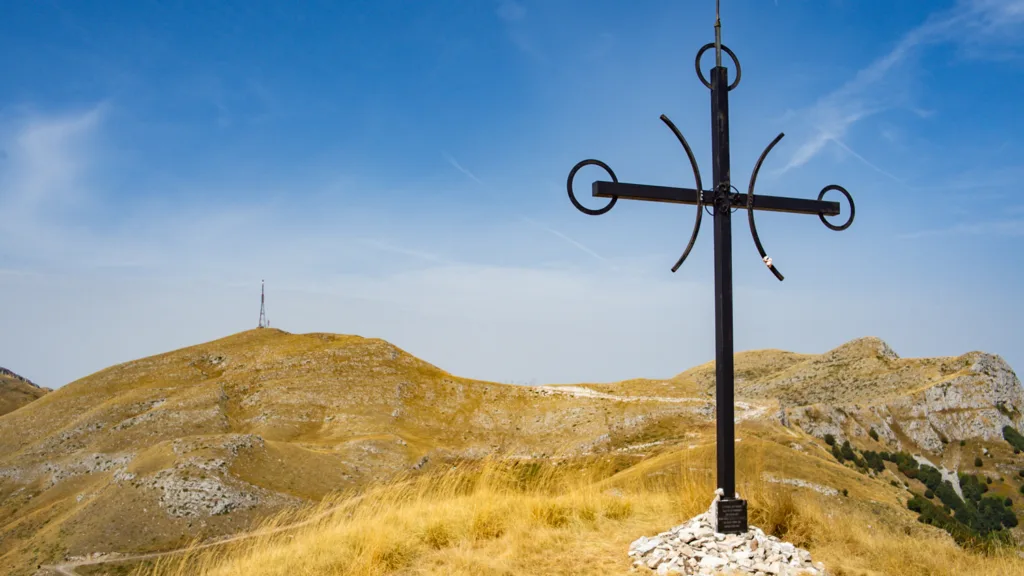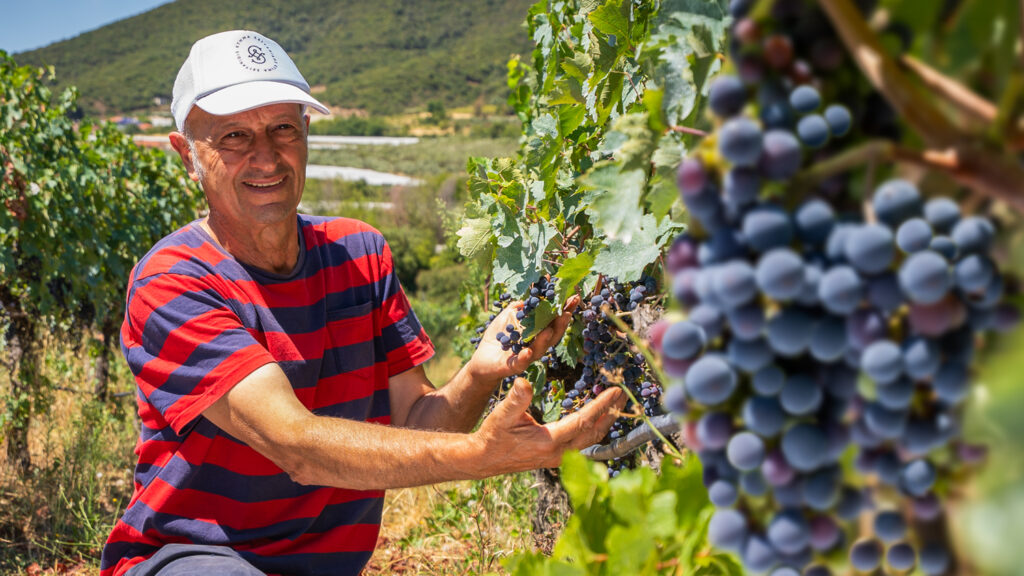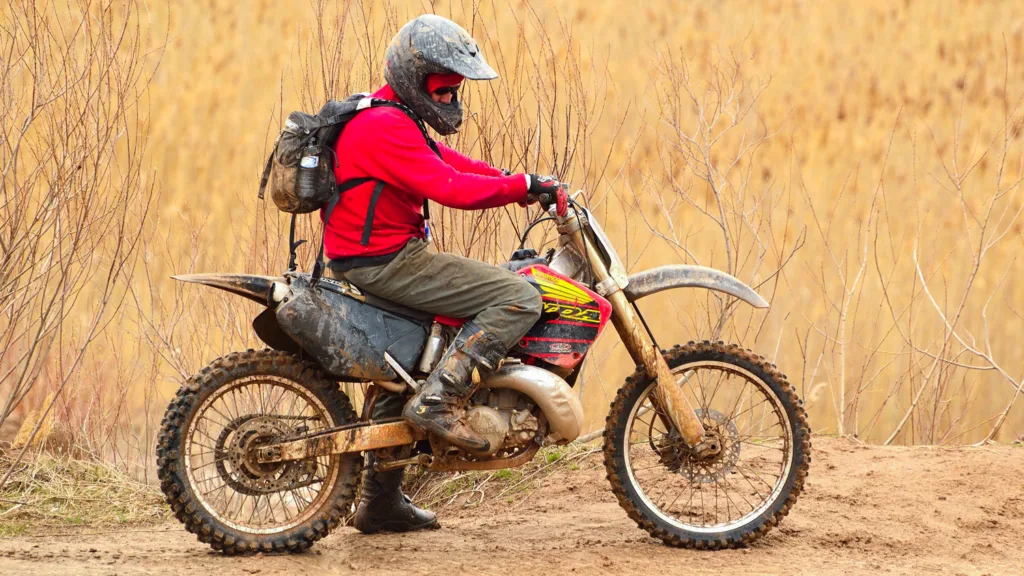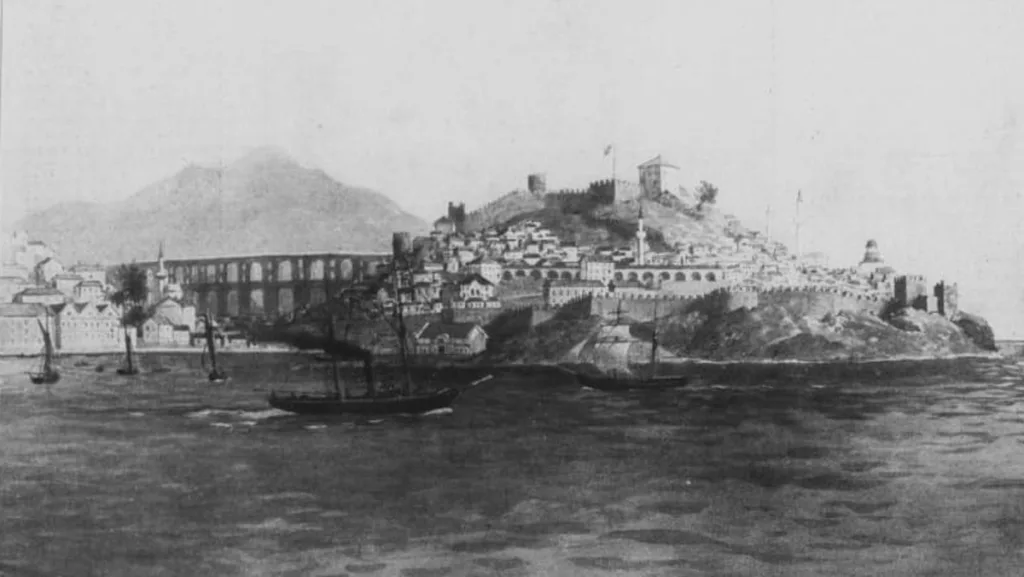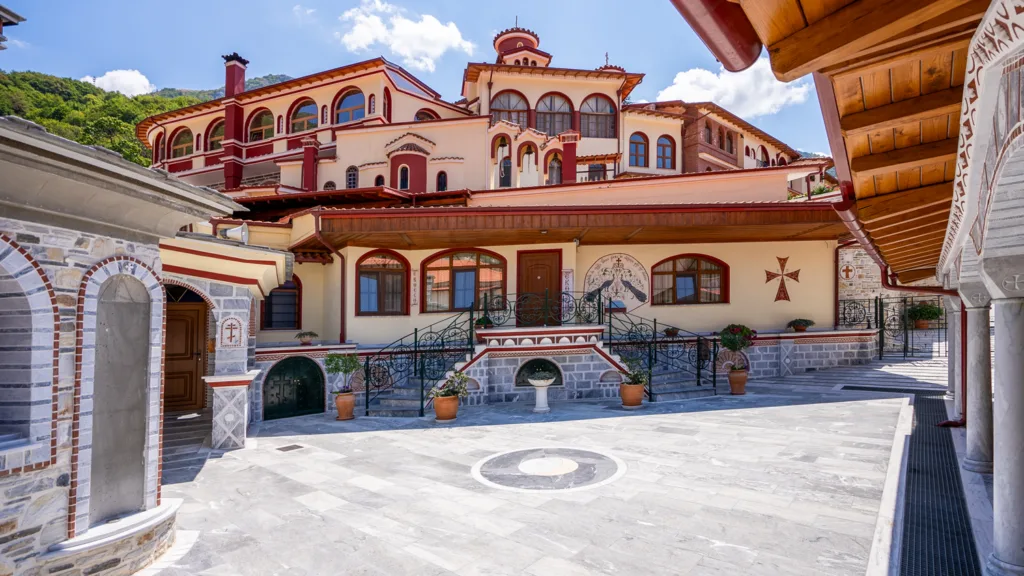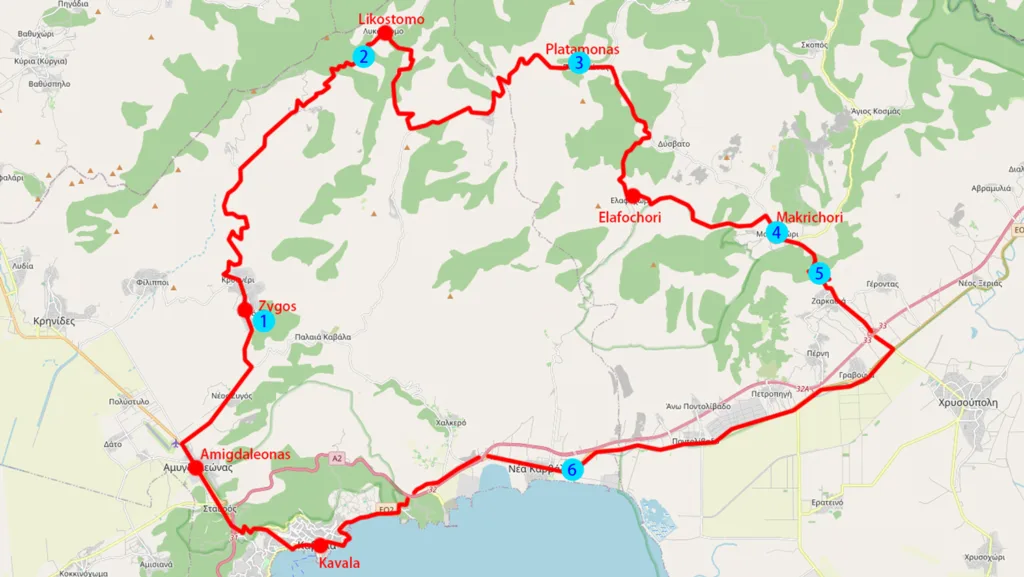Aqueduct of Kavala
Explore This Iconic Landmark
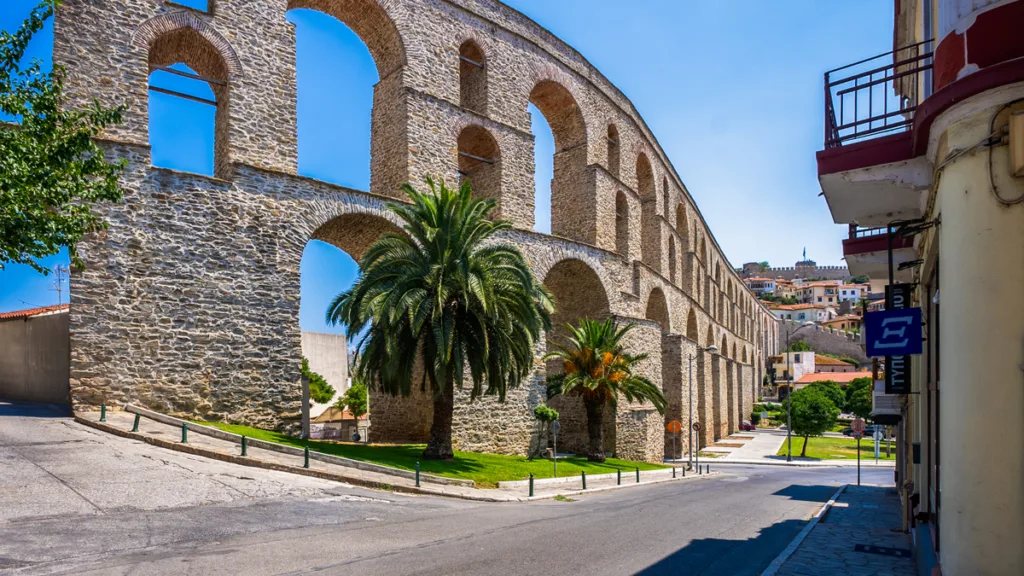
In this article, you will uncover the rich history and architectural marvels of the Aqueduct of Kavala, known locally as the Kamares. Get ready to explore one of Greece’s most iconic landmarks, its origins, and its significance to the city of Kavala.
The Aqueduct of Kavala: A Historical Overview
The Aqueduct of Kavala, also known as the Kamares (Greek for “arches”), stands as a testament to the city’s rich history and architectural prowess. This well-preserved structure, spanning 270 meters in length and reaching a maximum height of 25 meters, is not just an engineering marvel but a symbol of Kavala’s heritage.
Origins and Construction:
- Roman Roots: The aqueduct has its roots in Roman engineering, evident from the coarse bricks in its foundations.
- Byzantine Integration: In the 14th century, it was incorporated into a Byzantine barrier wall that protected the city and controlled traffic.
- Ottoman Reformation: The current structure was built by the Ottomans in the 16th century, under the rule of Suleiman the Magnificent. His vizier, Ibrahim Pasha, oversaw the transformation of the barrier wall into the majestic arches we see today.
Key Features:
- Length and Height: 270 meters long and up to 25 meters high.
- Number of Arches: Comprises 60 arches of varying dimensions.
- Water Source: Originally supplied water from the Pangaeus Mountains.
Architectural Significance
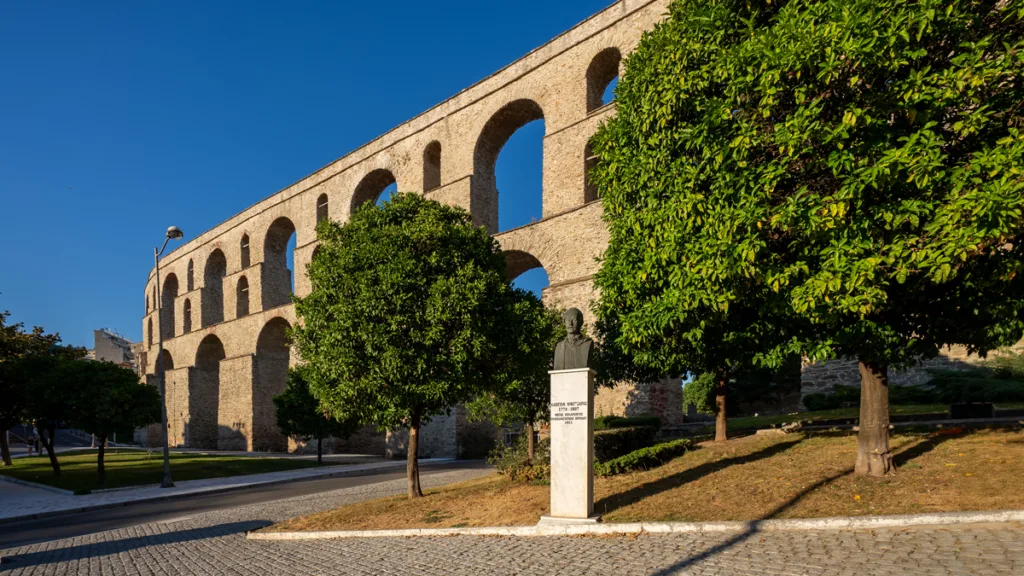
The Kamares is an impressive blend of Roman, Byzantine, and Ottoman architecture. Its design reflects the ingenuity and adaptability of these eras:
- Roman Foundations: Indications of Roman craftsmanship in the lower sections.
- Byzantine Wall: The early 14th-century wall that doubled as a defensive barrier.
- Ottoman Arches: The 16th-century arches replaced the wall, showcasing advanced engineering skills.
The Aqueduct’s Role Through the Ages
The Kamares played a crucial role in Kavala’s development, providing water to the city until the early 20th century. Here’s a look at its journey:
- Byzantine and Ottoman Use: The aqueduct ensured a steady water supply from the Pangaeus Mountains to the dry peninsula of Panagia.
- Public and Private Supply: Water was channeled into public fountains, a few public buildings like the hammam, and private residences.
- End of Functionality: The aqueduct ceased to serve its original purpose in 1911, but it remains a proud symbol of Kavala’s resilience and innovation.
Visiting the Kamares Today
Today, the aqueduct is a must-visit landmark for anyone exploring Kavala. Its towering arches are visible from many points in the city, particularly near the harbor. Walking under these arches offers a glimpse into the city’s storied past and architectural grandeur.
What to Expect:
- Easy Accessibility: The Kamares is easily accessible from the harbor.
- Photogenic Views: Perfect for photography enthusiasts looking to capture historical beauty.
- Scenic Walks: Enjoy a stroll from the aqueduct through the old town up to the fortress, where you can enjoy panoramic views of Kavala.
Conclusion
The Aqueduct of Kavala, or the Kamares, is a remarkable testament to the city’s rich historical and architectural heritage. From its Roman foundations to its 16th-century Ottoman grandeur, it reflects centuries of engineering ingenuity and cultural significance. Although it no longer serves its original purpose, the aqueduct remains a prominent symbol of Kavala’s past and a must-visit landmark.
Exploring the Kamares offers a unique glimpse into the city’s history and provides an unforgettable experience for any visitor. Whether you’re captivated by ancient architecture or simply enjoy scenic walks, the aqueduct’s majestic arches are sure to leave a lasting impression. Plan your visit and immerse yourself in the timeless beauty of Kavala.
find the best museums!
Faith and Religion
Faith and Religion in Greece Welcome to an exploration of the diverse and vibrant religious…
The Mountains
Mountains around Kavala Nature’s Hidden Treasures The Kavala Mountains in Northern Greece are more than…
Seitanidis Estate
Seitanidis Estate Winery organic wine Seitanidis Estate Winery – Discover Exquisite Greek Wines Seitanidis Estate…
Enduro
Enduro Riding in Kavala Your Guide to an Unforgettable Adventure If you’re seeking an adrenaline-fueled…
Internists
Internist in Kavala Medical Professionals If you’re looking for expert healthcare, Kavala offers a range…
History
History of Kavala Uncover the Past of a Historic City Welcome to a journey through…
UrbanBay Hotel
UrbanBay Hotel Why UrbanBay Hotel Kavala Stands Out Located just 100 meters from Kavala’s charming…
Monasteries
Monasteries of Kavala Discover spiritual places Kavala and its surrounding areas are brimming with spiritual…
Motorcycle Route 01
Motorcycle Rout Kavala Route 01 The Essentials at a Glance Route length: 100 km Ride…

